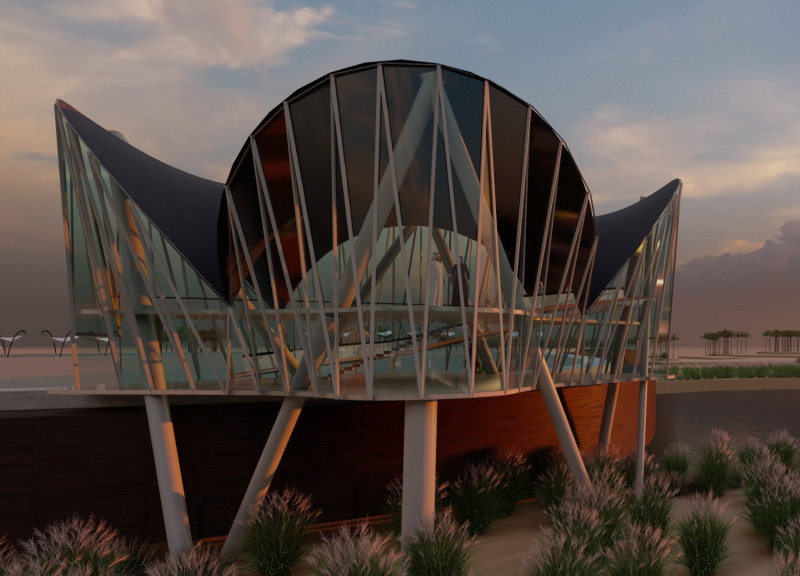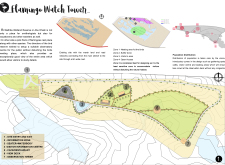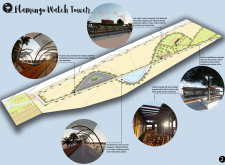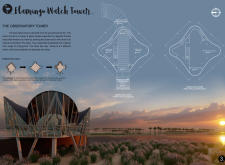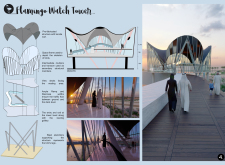5 key facts about this project
The Flamingo Watch Tower is set within the Al-Wathba Wetland Reserve in Abu Dhabi, designed to serve as an observatory for visitors who wish to engage with the local birdlife, especially the pink flamingoes. The aim is to create a space where people can learn about and appreciate wildlife while ensuring their nesting environments are protected. The overall design balances the needs of the public with the conservation of nature, allowing for exploration without disturbance to the ecosystem.
Spatial Organization
The layout of the project is divided into four specific zones to enhance visitor interaction while prioritizing ecological preservation. The first zone is reserved for the nesting birds, creating a protected area that minimizes human interference. Surrounding it is a buffer zone, which acts as a safeguard for wildlife. The third zone caters to visitors, designed to facilitate their experience without impacting sensitive habitats. The fourth zone offers open access, inviting guests to explore the wetlands more freely.
Visitor Centre
The visitor centre plays an important role in the project, featuring areas for gathering, cafés, and educational resources such as libraries and lecture halls. These facilities are connected by shaded walkways, which promote the flow of foot traffic while respecting the natural landscape. Such design choices encourage people to engage with their surroundings while learning about the variety of species that inhabit the reserve.
Observation Tower
At the heart of the project is the observation tower, standing at a height of 5 meters to provide clear views of the wetlands below. Its structure includes glass facades and diagonal frames, ensuring transparency and a connection to the natural environment. The roof takes cues from bird wings, featuring a hyperbolic paraboloid form that enhances its design. This shape not only contributes to the visual appeal but also effectively manages rainwater runoff.
Design Details
The observation decks are strategically placed to overlook the nesting areas, enabling visitors to observe the birds without being intrusive. Access to these platforms is provided via ramps and stairs, designed for ease of movement. The thoughtful arrangement of spaces allows for an enriching experience centered on education and a deeper understanding of wildlife and conservation efforts. Each detail underscores the commitment to balancing human curiosity with respect for nature.


